An Artist in Her Studio: Helen Frankenthaler and the Feminine
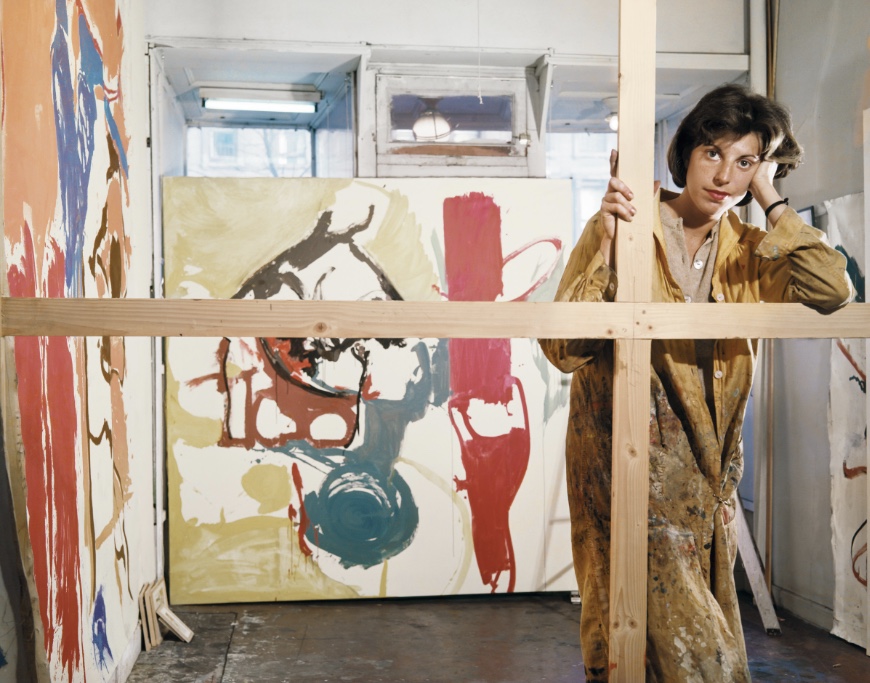
HELEN FRANKENTHALER has become one of the most celebrated Abstract Expressionist painters of the twentieth century. Known for works like her 1952 Mountains and Sea, she is remembered as a strong, feminine energy in a moment dominated by the masculine memory of artists like Jackson Pollock. But did Frankenthaler want to be categorized as a “woman artist”? Or did she feel that interpreting her works as feminine was limiting?
Our connection with a visual artwork begins when we first experience it face-to-face, perhaps strolling contemplatively through a white-walled gallery on a rainy afternoon. The bustle of the city hums just outside the walls around us, but in a moment of sheer aesthetic, perhaps hedonistic, and sometimes socially-charged reflection, our mind connects with art.
Whether we are taking in the blocked colors of a Rothko or the swimming pastel hues of a Frankenthaler, our experience with an artwork is usually informed by our preexisting understanding of the artist’s biography. In 2019, thanks to the genre-bending, discipline-expanding, and canon-exploding efforts by artists and historians alike, our once monolithic visual culture has been forever disrupted, and rightfully so. Yet, even as our art historical dialogue continues to grow in inclusive and dynamic ways, images of artists from their own time can become active, living memories of the gendered spaces in which they worked. Today, if these images are not critically addressed, we may continue to assess those artists, and their artworks, with an unconscious, internalized sense of their historically relegated status.
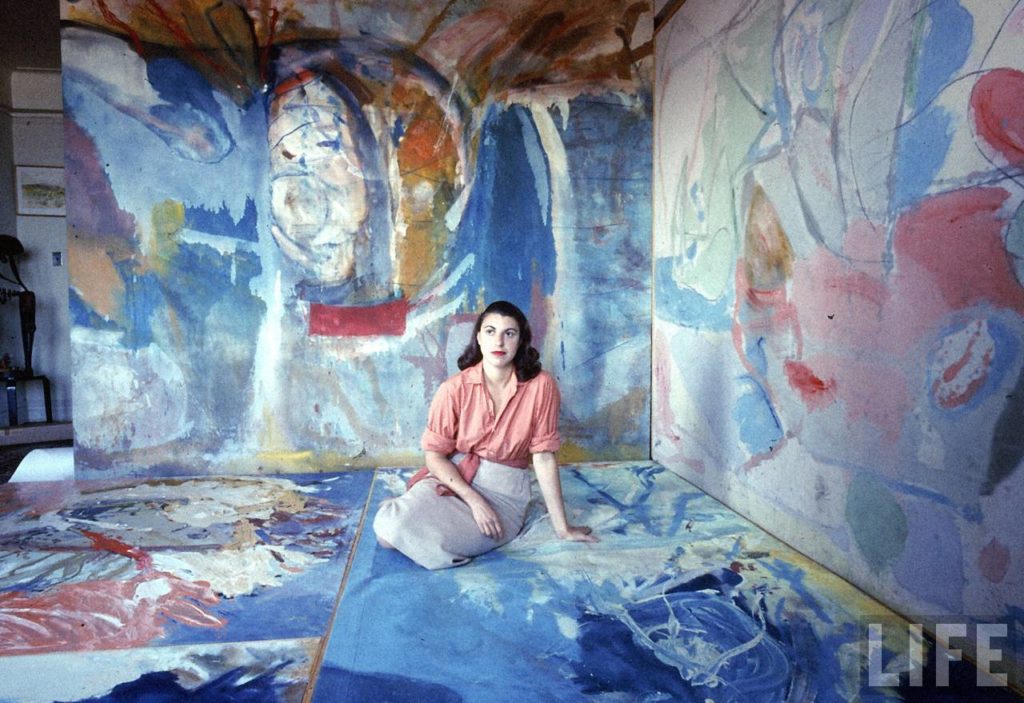
Gordon Parks photographed Frankenthaler in her studio for a 1956 spread in LIFE magazine, and the photographs have since become infamous representations of the gendered reality of the American Abstract Expressionist community in the fifties and sixties. In 2017, Jon Mann of ARTSY compared the docile way in which Frankenthaler is pictured within her work with an earlier LIFE magazine spread: Jackson Pollock, the man that many deem to be the superlative artist of the movement. While Frankenthaler is reserved, buttoned-up, and as complete as the works within which she sits, Pollock is messy, active, and visibly involved in his process.
The dialogue between these two spreads appears to be a tale of socially-determined masculine energy and feminine composure. Though Pollock’s dominant stance is a key part of his artistic praxis, the issue is not that he is standing while she is sitting. Rather, it is that, with Pollock, we are allowed to glimpse into the intimate sides of his tortured and groundbreaking practice. In stark opposition, Parks’ images of Frankenthaler reinforce our need to see women artists as highly curated, polished figures who are as complete as the masterpieces that they produce. Even if those works appear highly abstracted and visceral, each stroke is perceived, at some level, to represent a calculated, perfected moment of visual enlightenment.
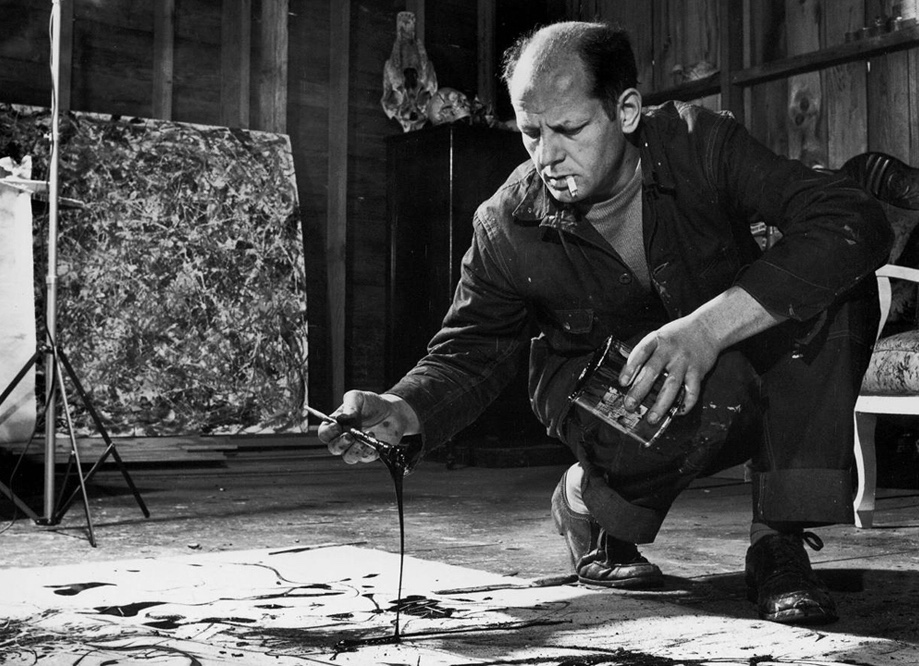
In his article, Mann observes that, “the message is clear: Abstract Expressionism, which hoped to connect more directly to a primal sense of artistic purpose, is for tough, complicated men to pour their expressive force into large paintings with urgent, even violent gestures.” As Mann illuminates the gendered ways in which each artist was photographed, he adds the key nuance: that Frankenthaler fought against a purely gendered narrative surrounding her work. As he quotes from a 1989 interview, Frankenthaler never wanted to discuss: “[her] former marriage, women artists, and what [she thought] of [her] contemporaries.”
Perhaps Frankenthaler’s desire to dissociate her work from a gendered dialogue arises from the exact ethos with that we should use to re-historicize the images of the artist in her studio. Although the 1956 Parks images are now nearly canonical, they are not the only images that capture Frankenthaler with her oeuvre. In later images of the artist in her studio, Frankenthaler appears to have become a fully liberated and self-aware version of her mid-century persona. In these later years, her involved practice becomes palpable to her audience, full of a kinetic energy that enlivens both her images and her artistic personality. No longer sitting and reflecting on the art that she has made, the artist is arms-deep in the process, bent over and extending her physical being, so much so that she becomes one with the creativity that she captures in paint.
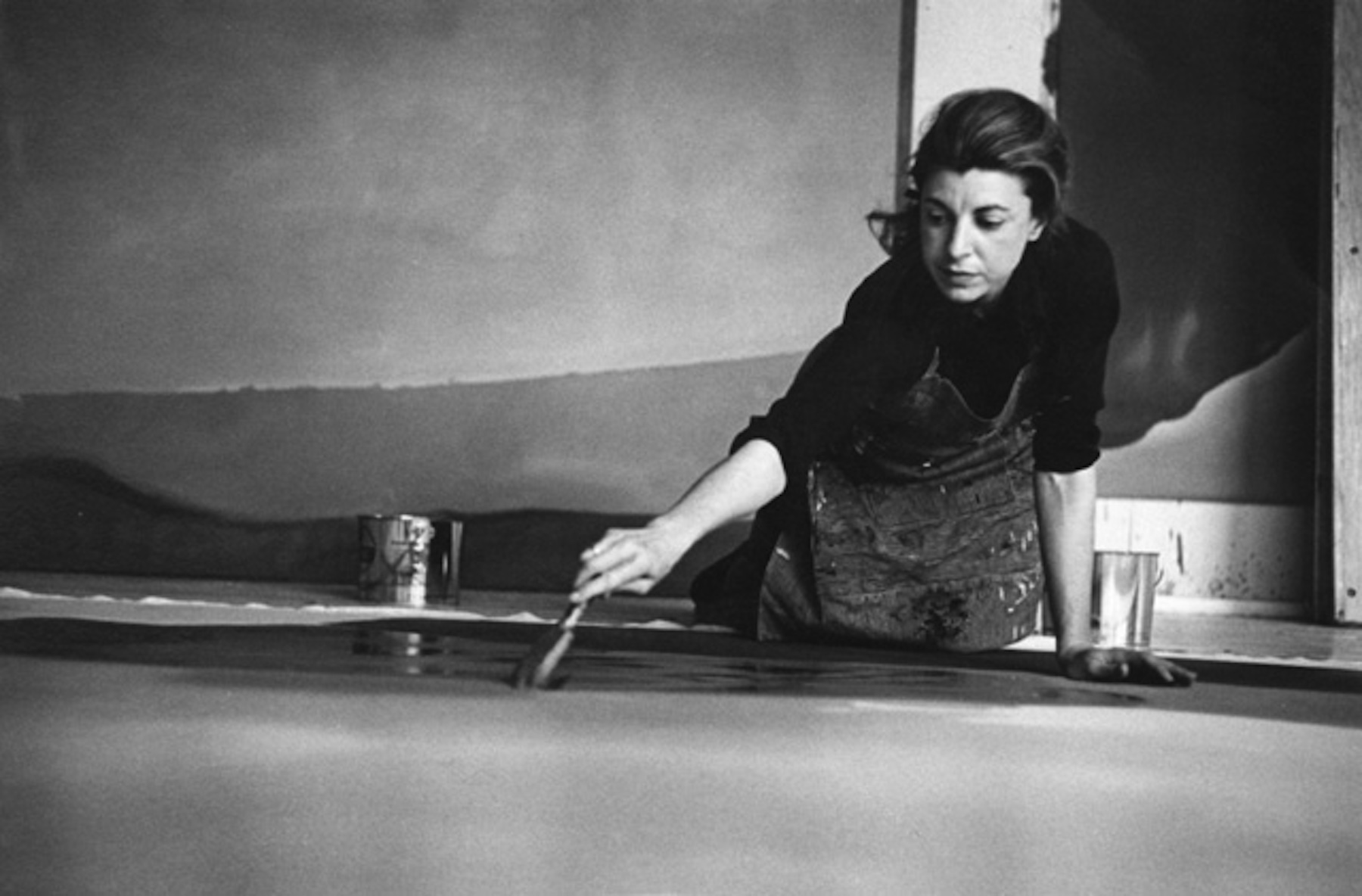
Seeing these later images of Frankenthaler, we start to wonder why Parks’ 1956 series of Frankenthaler has become so central to many understandings of her persona and her work. Is our re-historicizing of women artists doomed to be limited to a binary comparison? Are we only taught to elevate and deepen our understandings of women artists by categorizing them as such and comparing them to male creations and the male gaze? Such comparative analyses should not be overly scrutinized. In truth, these comparisons have raised the critical questions that have made space for this kind of conversation.
Instead, we, as consumers of art and its many stories, have the opportunity to remain aware of the passivity with which we receive information about artists’ lives. Though many continue to be divided about the way in which an artist’s problematic behavior affects the way in which we celebrate and commemorate his or her “genius” mark on art history, we, as an art-consuming society, are becoming more open to adjusting our given artistic paradigms. Perhaps we ought not to reserve that flexibility for situations in which an artist has committed an extreme immoral act. Instead, we have a duty to consistently re-evaluate the artist stories we’ve been given, and the images that continue to tell a piece of those stories. If not, we only see a partial picture. Can we explore the implications of the fact that the LIFE spread of Pollock was captured by twenty-six-year-old Martha Holmes, or that Gordon Parks was an accomplished artist-photographer in his own right? These small pieces of history are more complicated then we let ourselves believe, but there is always beauty to be found in embracing that discomfort. Perhaps, at the end of the day, that beauty is all we can strive for. As Frankenthaler said,
“What concerns me when I work is not whether the picture is a landscape or whether somebody will see a sunset in it. What concerns me is, did I make a beautiful picture?”
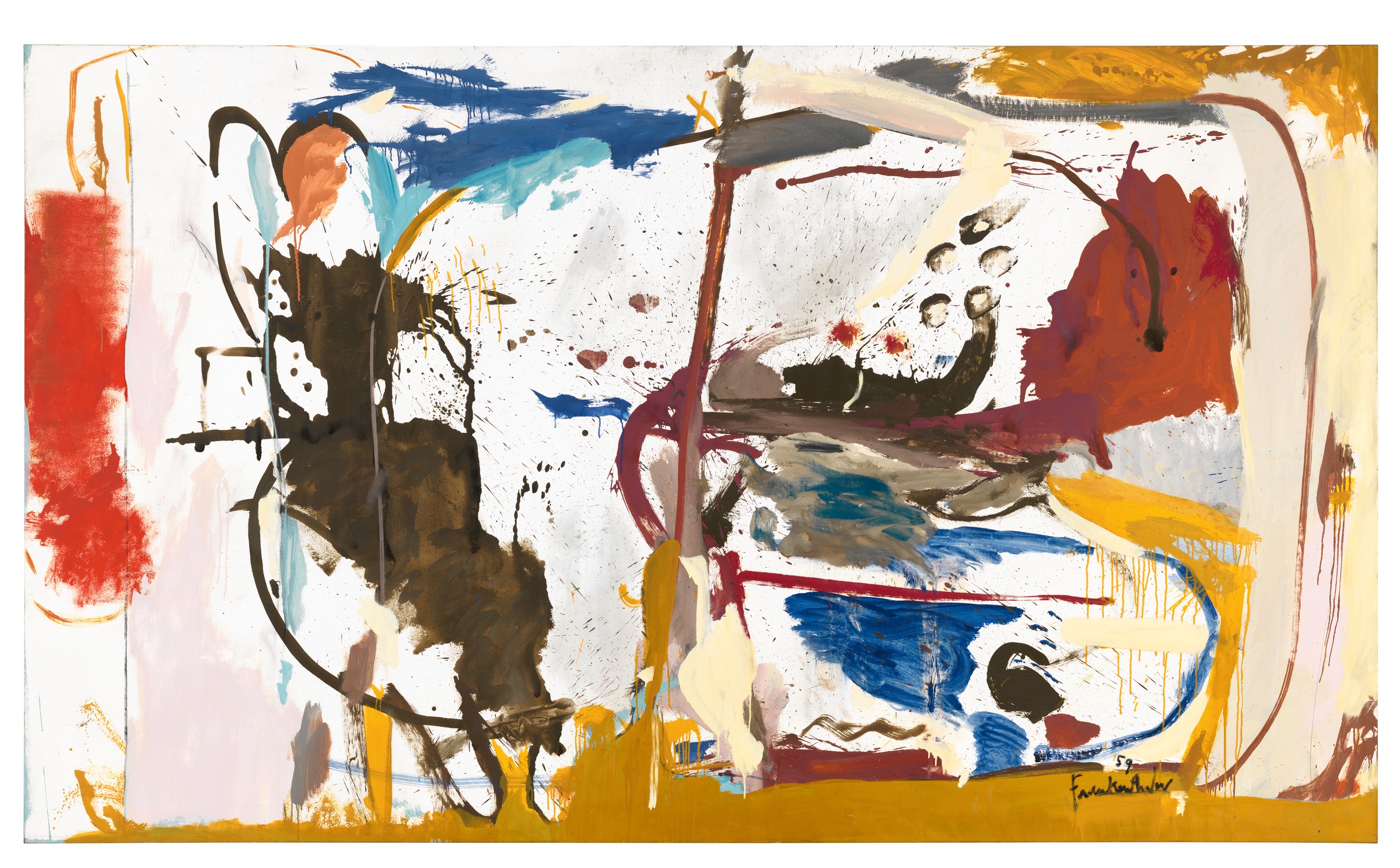
Top Image: Frankenthaler in her studio at Third Avenue and East 94th Street, New York, with Mediterranean Thoughts (1960, in progress, left) and Figure with Thoughts (1960, in progress, center), March 1960. Photo courtesy © Tony Vaccaro.



